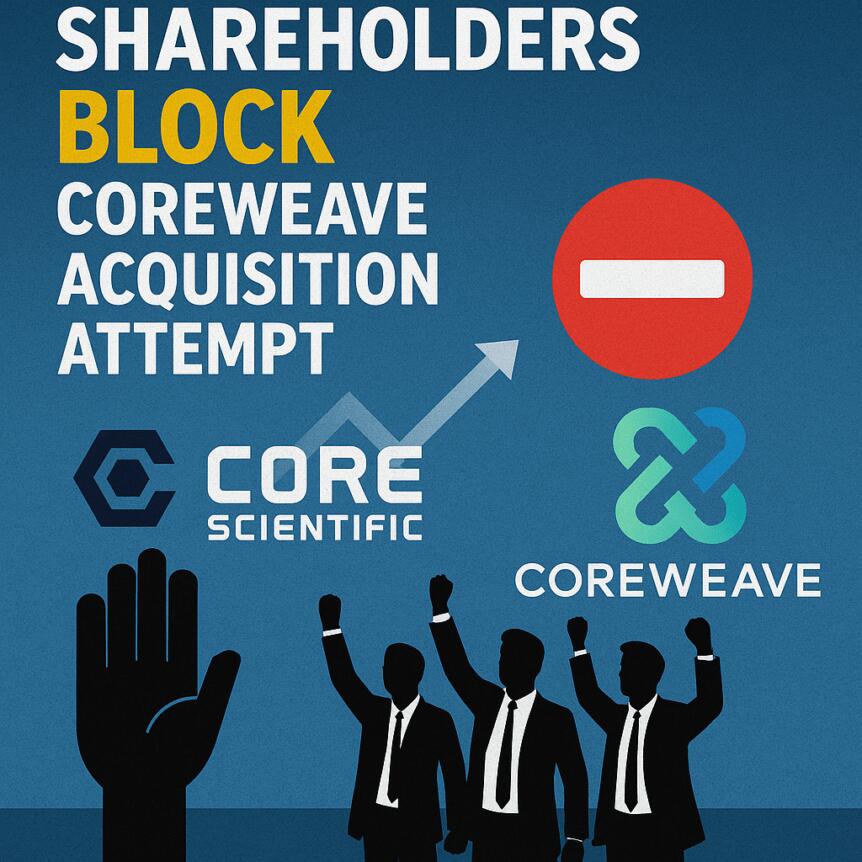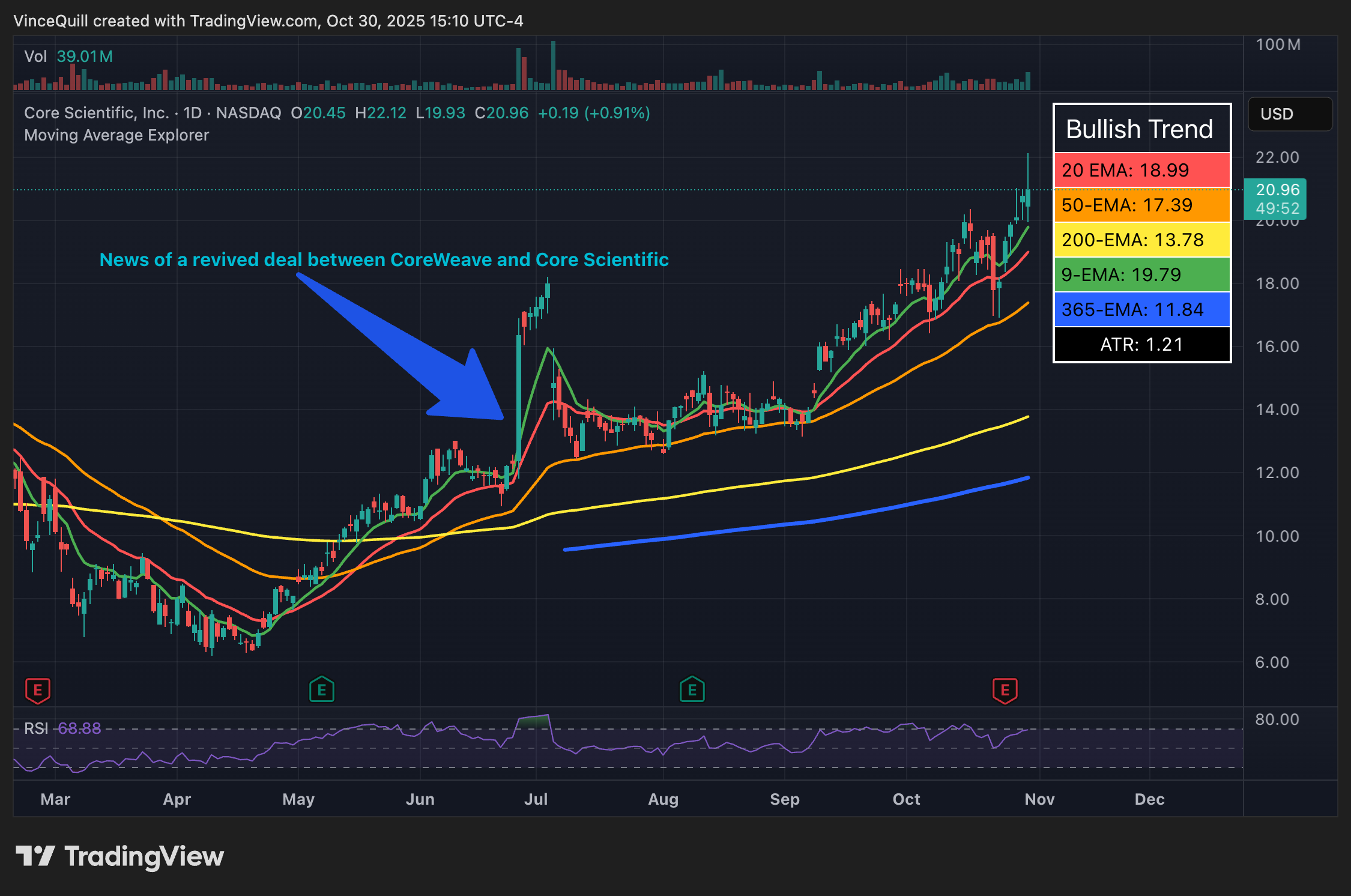Core Scientific Shareholders Block CoreWeave Acquisition Attempt

Bitcoin miner Core Scientific faced a setback on Thursday as it failed to secure shareholder approval for its proposed merger with AI infrastructure firm CoreWeave. The outcome of the preliminary vote will be officially disclosed in an upcoming SEC filing, expected on Friday. The proposed acquisition, valued at around $9 billion, has been a significant focus in the crypto and AI sectors, reflecting the growing intersection between blockchain-based mining operations and artificial intelligence technology.
- Core Scientific’s merger with CoreWeave was rejected by shareholders during Thursday’s vote.
- The deal, valued at approximately $9 billion, remained pending approval; final results to be published soon.
- Shares of Core Scientific declined over 5% following the vote outcome.
- Despite the rejection, the proposed merger highlights ongoing industry consolidation between crypto mining and AI firms.
- Major shareholders, such as Two Seas Capital, voiced opposition, citing concerns over undervaluation.
Core Scientific, a prominent player in Bitcoin mining, attempted to merge with AI infrastructure provider CoreWeave in July, offering shareholders 0.1235 shares of CoreWeave Class A stock for each share they held. The deal was part of a broader strategic move, signaling a tie-up between the crypto-mining industry and AI technology. However, the merger faced resistance from some shareholders during Thursday’s special meeting, ultimately resulting in its rejection. The final vote’s results will be released in a forthcoming SEC filing.
The deal had already stirred considerable attention among investors, with shares of Core Scientific falling by more than 5% immediately after the vote. Despite this setback, the merger agreement has been a topic of discussion for over a year, as both companies’ stock prices fluctuate significantly amid ongoing negotiations.
Investor sentiment has been divided, especially after CoreScientific rejected a previous buyout bid from CoreWeave evaluating the company at roughly $1 billion, or $5.75 per share, calling the offer significantly undervalued. Since re-engaging in negotiations, Core Scientific’s stock has more than tripled, increasing from around $6.20 in April to approximately $20.90 now. Meanwhile, CoreWeave’s shares have experienced declines, falling from about $163 to near $100 at the end of July, reflecting mixed feelings about the deal’s prospects.
 CoreWeave’s stock price trend from March to October. Source: TradingView
CoreWeave’s stock price trend from March to October. Source: TradingView
Opposition to the merger within CoreScientific remains strong, with notable shareholders like Two Seas Capital raising concerns over perceived undervaluation and potential economic risks for shareholders. The disagreement underscores ongoing tensions within the industry as firms weigh strategic moves amidst fluctuating crypto markets and evolving regulatory landscapes.
As the industry continues to explore new synergies between blockchain, Bitcoin, and AI, the outcome of this rejection may influence future corporate strategies and investor confidence in crypto-related mergers and acquisitions.
This article was originally published as Core Scientific Shareholders Block CoreWeave Acquisition Attempt on Crypto Breaking News – your trusted source for crypto news, Bitcoin news, and blockchain updates.
You May Also Like

Michael Saylor: Bitcoin at 99% Discount, Will Hit $10M When Bankers Approve

Polymarket Shows 61% Chance Bitcoin Falls Below $100K Before 2026
